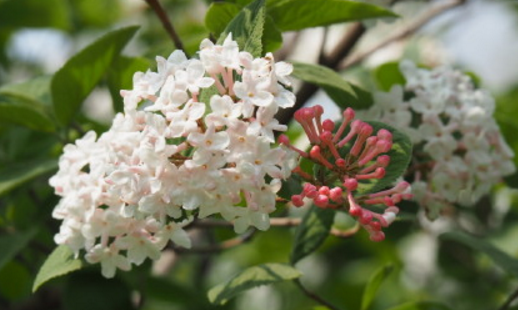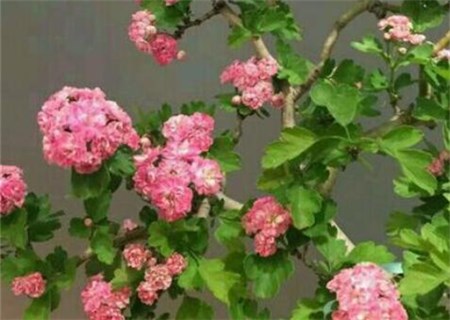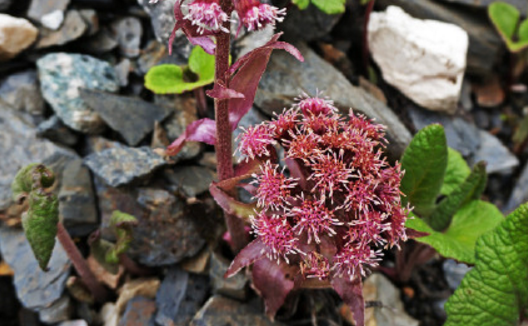What is the planting method of vanilla caryophyllum? The difference between lilac and clove? How do you breed?
Artemisia mandshurica is mainly distributed in the temperate zone, and it was distributed in North and Northwest China in the early days, so what is the planting method? The difference between lilac and clove? How do you breed? It is understood that vanilla likes fertile, soft, slightly acidic soil with good drainage, and is not resistant to barren soil; vanilla is not resistant to drought and likes wet soil, but it does not grow well in stagnant water, so pay attention to timely drainage; vanilla likes light and is not resistant to sun exposure, and can grow in semi-shade conditions, and intercropping with trees with larger trees is beneficial to its growth. Euphorbia fragrans do not require high temperature and can spend the winter in the open field in the warm small environment of the north.

1. What is the planting method of vanilla?
1. Seed harvesting of vanilla
The seeds are easy to fall off after the fruit is ripe, so it is necessary to pay attention to the observation at the beginning of August. After the fruit is ripe, the seeds should be picked in time, and the seeds should be dug out after harvest and soaked for about 3 days. Rinse away the pulp and impurities, put the seeds out in a cool and ventilated place to dry, screen the pericarp and other impurities with a sieve, bag the clean seeds into storage, store them in a cool, ventilated and dry place, and wait for the arrival of sowing time.
2. Planting of vanilla
Fragrant pods are suitable for autumn sowing because it saves both time and labor. Sowing seeds in late October can be watered once after sowing. Soak the seeds with copper sulfate solution for 6 hours for 8 hours before sowing, then wash them with clean water, and then sow the seeds after a little drying.
3. Late maintenance of vanilla.
In order to ensure the growth of fragrant pod, it is necessary to topdressing in time, the first topdressing usually begins to grow in spring, the second topdressing should be before flowering, and the third topdressing should be after flowering. Topdressing is suitable to use farm manure such as dried manure, manure and cake fertilizer, of course, chemical fertilizer can also be used, but pay attention to the concentration when applying to prevent burning seedlings. During the growth period, pay attention to diseases and insect disasters, the common are underground pests, ground tigers, beetles, etc., diluted with a certain concentration of dimethoate and other insecticides, irrigate the roots of seedlings to control pests.
Second, the difference between lilac and clove?
1. The height difference between vanilla and clove.
Both vanilla and clove are deciduous shrubs, but vanilla is relatively tall, up to 3 meters, while cloves are relatively short, growing up to 1 to 2 meters.
2. The difference between the leaves of vanilla and clove.
The leaf is Obovate, with microhairs on the leaf surface and tiny thorns on the leaf edge; the clove leaf is heart-shaped and the leaf surface is smooth. The left side of the picture below is the leaf of spice pod, and the right side is the leaf of clove.
3. The difference between the origin of vanilla and clove.
Euphorbia arundinacea originated in China, mainly distributed in the north of China, is often planted in ancient gardens, while cloves come from North America, so they really come to us across the sea.
4. the difference between the petals of vanilla and clove.
There are 5 petals and 5 petals, while cloves have 4 petals, which is the most intuitive and fastest way to distinguish. The left side of the picture below is the fragrant pod flower, and the right side is the lilac flower.
5. The difference of florescence between vanilla and clove.
The flowering stage of the clove is relatively early, and it will be in full bloom in the middle and late March; relatively speaking, the lilac flower blooms a little later and generally blooms from the end of March to April.
6. The difference between vanilla and lilac.
The words of fragrant pods and flowers are the everlasting love until death, and the words of lilacs are the memories of youth, adorable and light sorrow.
Third, how to reproduce?
Sowing and propagation of vanilla
Collect seeds
The seeds of vanilla are not so easy to collect, and the fruit of vanilla is easy to fall off after ripening, so in August, the seeds must be collected during the ripening period, and the seeds should be soaked after they are collected. wash away some impurities or pulp, then air and dry them, then use tools to remove some impurities again, and then you can store the seeds for sowing.
Soil treatment
Before sowing and breeding, the pot soil should be loosened, the weeds should be removed, and the base fertilizer should be best placed, so that plants can grow more healthily.
Planting work
Autumn is a good time to plant vanilla. After sowing, water is watered and watered thoroughly. In order to make the pod pod grow better, we should carry out topdressing in time, the first topdressing in the early spring of the following year, the second topdressing before flowering, the third topdressing after flowering, and the need to pay attention not to fertilize too much when topdressing, resulting in the phenomenon of burning seedlings, and pay attention to the prevention and control of diseases and insect pests during the growth period. Timely use of chemicals to deal with diseases and insect pests.
Time: 2019-03-16 Click:
- Prev

What are the planting methods of Hawthorn trees in Rosaceae? What are the benefits of soaking in water? When is the season mature?
Hawthorn tree is a deciduous tree with nearly oval leaves, and its adaptability is strong, even in the thin mountains, its growth and development is better than other fruit trees. So do you know the planting methods of Hawthorn tree? What are the benefits of soaking in water? When is the season ripe? According to uncle Chen, a perennial Hawthorn farmer, he told us
- Next

How to sow and reproduce in Compositae? What's the use? Diseases and insect pests and their control?
Beedol, alias Donghua, Fedong, so how to sow and reproduce? What's the use? Diseases and insect pests and their control? It is understood that beedol is a plant that likes a cool environment and requires more humid air. When choosing soil, generally choose loose and fertile soil, be careful not to be too dry
Related
- Fuxing push coffee new agricultural production and marketing class: lack of small-scale processing plants
- Jujube rice field leisure farm deep ploughing Yilan for five years to create a space for organic food and play
- Nongyu Farm-A trial of organic papaya for brave women with advanced technology
- Four points for attention in the prevention and control of diseases and insect pests of edible fungi
- How to add nutrient solution to Edible Fungi
- Is there any good way to control edible fungus mites?
- Open Inoculation Technology of Edible Fungi
- Is there any clever way to use fertilizer for edible fungus in winter?
- What agents are used to kill the pathogens of edible fungi in the mushroom shed?
- Rapid drying of Edible Fungi

